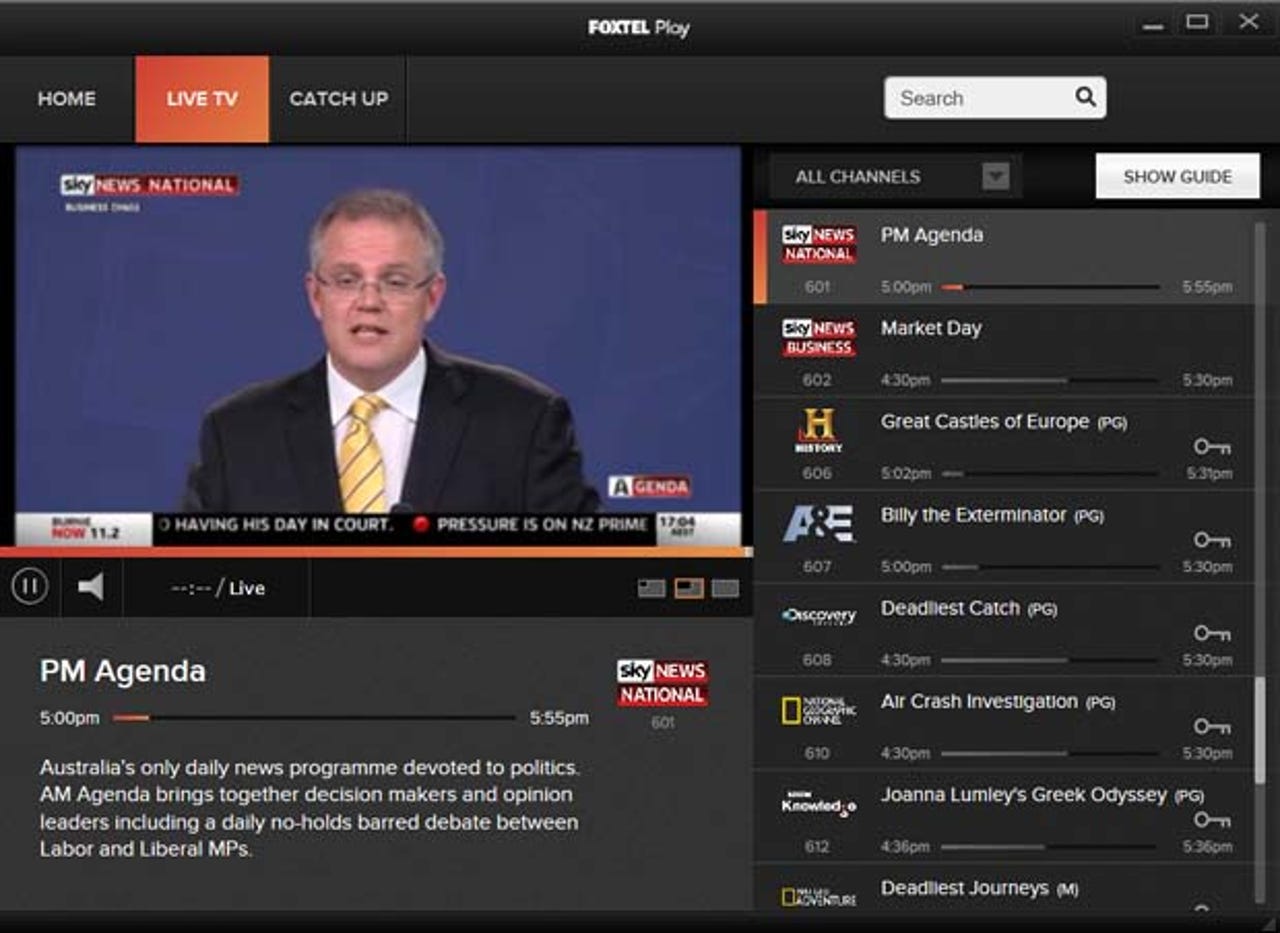HD Foxtel Play waits on better broadband

Telstra and News Corporation joint pay TV company Foxtel is holding off on offering high-definition streams of its channels through its new Foxtel Play IPTV application until the higher broadband speeds are available across Australia.
The new Foxtel Play service began operation on Tuesday allowing, for the first time, customers to sign onto the service on a month-to-month basis without the need for having a dedicated fixed line subscription to Foxtel. The product is now available on PC, Mac, Xbox 360 and Samsung smart TVs beginning at AU$25 per month.
Michael Ivanchenko, Foxtel's director of product told ZDNet that the design and development of the Foxtel Play service had taken the company around six to eight months building on the back of the company's Go app that streams content onto tablets and smartphones.
"One of the key things that we've done at Foxtel over the past 12 months was incrementally establish our IP video player. It has been very much a mentality that we need to move Foxtel to a realm where we can deliver content in any format in any medium rather than build a dedicated, end-to-end chain," he said.
After building the app, there was a 10 to 12 weeks period for testing on devices and in field trials. The backend has now been developed so that Foxtel can quickly develop new apps to take the streaming content.
"The challenge is not whether this is technically possible, it is now whether you make it sustainable and possible," he said.
The Play app itself is built with HTML 5 technologies, and the video streaming uses "pretty standard" bit rate adaptive technology to determine the best quality to stream to customers relative to their broadband connection, according to Foxtel's head of product solutions Brett Paton.
"The player does real time tests on the performance of your network, and we've crafted a whole range of profiles which are bitrate and resolution combinations. We did a lot of work in labs with our experts to come up with the right combinations across all the various screen sizes from small phones through to people connecting to their primary device via play," he said.
The service is not yet available in HD, and Ivanchenko said that this was because not everyone in Australia would be able to get HD streams on their current broadband connection.
"In Australia with the geography and the nature of what we have, it is not realistic to jump to a similar service we would provide for instance if we were in Tokyo," he said.
"We are over time going to see an increase in consistent bandwidth available, and that's the key one. We want to create a really good user experience that is totally consistent over time.
"As infrastructure improves, as availability of bandwidth improves, we're in a position to move with that and take advantage of that. But there's no point in jumping to that right now if there is a lot who couldn't take advantage of it."
The Federal government's AU$37.4 billion National Broadband Network (NBN) project will deliver greatly improve this situation, with 93 percent of premises set to get fibre-to-the-premises connections with speeds of up to 1Gbps in the immediate future. The Coalition has also guaranteed at least 25Mbps speeds in its broadband policy which would see 71 percent of premises connected to their NBN network via fibre to the node.
Implementing a HD stream for content would be relatively simple when the time comes, Ivanchenko said.
"It's not that we're not capable of doing HD, we're just conscious of making sure we get this service right and then we'll increase the bandwidth and the profiles to get HD right," he said.
Similarly, Ivanchenko said that Foxtel would look to expand the platforms and devices where the service is available when the company can ensure that the user experience on each platform is the same.
